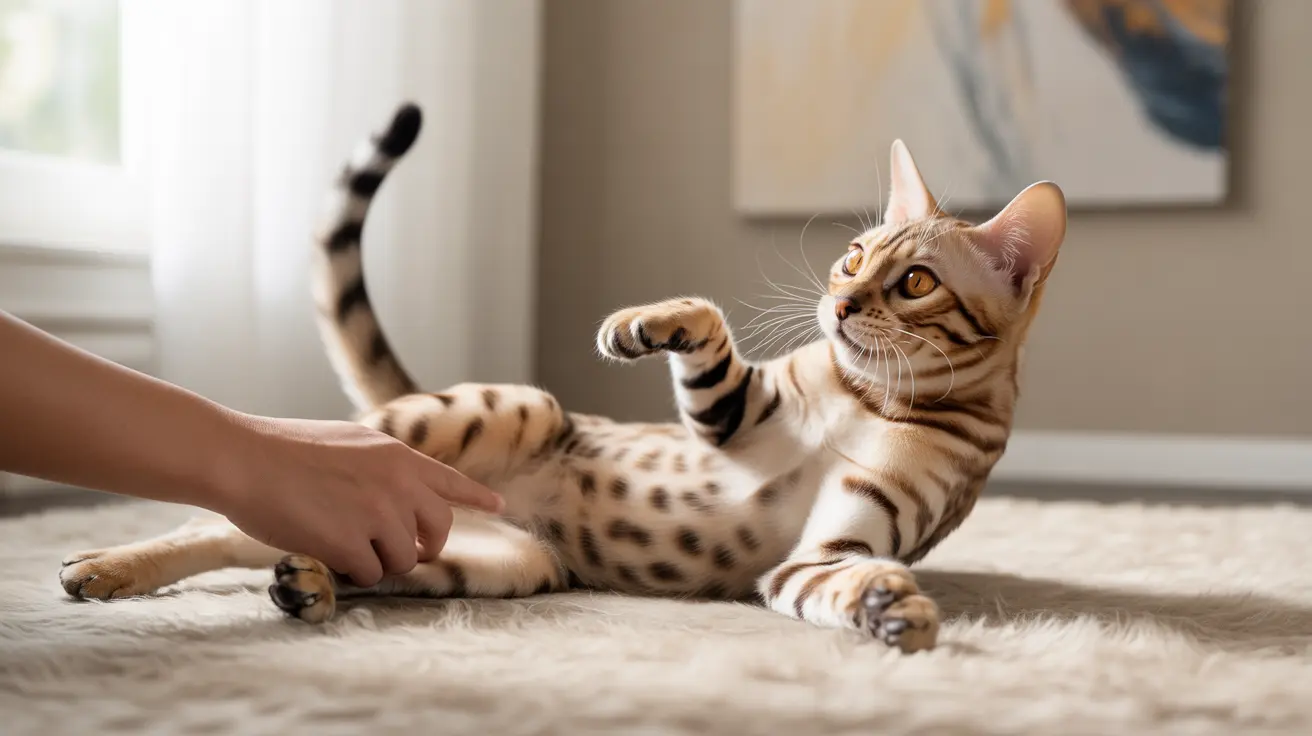Understanding Cat Ticklishness: The Science Behind It
If you've ever wondered whether cats are ticklish, the answer isn't as straightforward as you might think. While cats can experience sensations similar to what we humans call tickling, their response is quite different from our laughing reaction. Cats possess a sophisticated system of touch receptors that allows them to experience various sensations, including a form of ticklishness.
The scientific community recognizes two distinct types of tickling sensations: gargalesis and knismesis. While cats don't experience gargalesis (the type that causes laughter in humans), they are capable of experiencing knismesis – a lighter touch sensation that serves as a protective mechanism.
Most Sensitive Spots on Your Cat's Body
Cats have several particularly sensitive areas where they might display ticklish responses. These spots include:
- The chin and base of whiskers
- Paw pads
- Behind the ears
- Base of the tail
- Belly area
Each of these locations contains concentrated nerve endings that make them especially responsive to touch. However, it's important to note that sensitivity doesn't always equate to enjoyment – many cats may react defensively when these areas are touched.
The Role of Fur in Feline Sensitivity
A cat's fur plays a crucial role in how they experience touch and tickling sensations. Their fur acts as a protective barrier, filtering out minor stimuli while still allowing them to detect important touch signals. Areas with thinner fur tend to be more sensitive to touch, which is why spots like the belly and chin often trigger more pronounced responses.
How to Recognize Your Cat's Response to Touch
Understanding whether your cat enjoys being touched in certain areas requires careful observation of their body language. Signs that your cat is comfortable include:
- Purring and relaxed body posture
- Leaning into your touch
- Slow blinking
- Staying in place
Conversely, signs of discomfort include:
- Tail twitching
- Skin rippling
- Sudden turning toward your hand
- Attempting to move away
Safe Ways to Pet Your Cat
Instead of trying to tickle your cat, focus on petting them in ways they typically enjoy. Start with safe areas like the cheeks and chin, where most cats appreciate attention. Always let your cat set the pace and boundaries for physical interaction.
The Evolutionary Purpose of Cat Sensitivity
The ticklish response in cats serves an important evolutionary purpose. This heightened sensitivity helps them detect potential threats like parasites or predators. It's part of their survival instinct rather than a playful response like human ticklishness.
Frequently Asked Questions
Are cats actually ticklish, and how does their ticklishness differ from humans?
Cats experience a form of ticklishness called knismesis, which is different from human ticklishness. While humans can laugh from tickling (gargalesis), cats' responses are more protective in nature, helping them detect potential threats on their skin.
What are the most ticklish spots on a cat's body that owners should know about?
The most sensitive areas on a cat's body include their paw pads, chin, whisker area, belly, and the base of their tail. However, sensitivity varies among individual cats, and some may be more responsive than others.
How does a cat's fur affect their sensitivity to being tickled or touched?
A cat's fur acts as a natural buffer against light touches. Areas with less fur coverage tend to be more sensitive to touch, while heavily furred areas provide more protection against tickling sensations.
How can I tell if my cat enjoys being tickled or is uncomfortable with it?
Watch your cat's body language. Signs of enjoyment include purring, relaxed posture, and leaning into touch. Signs of discomfort include tail twitching, skin rippling, attempting to move away, or swatting at your hand.
Is it safe to tickle a cat's belly, or are there risks involved with touching sensitive areas?
The belly is one of the most sensitive and vulnerable areas for cats. Most cats don't appreciate belly touches and may respond defensively. It's best to avoid tickling the belly unless your cat has clearly shown they enjoy it.
Conclusion
While cats can experience a form of ticklishness, it's important to understand that their sensitivity serves a protective purpose rather than a playful one. Respecting your cat's boundaries and focusing on gentle petting in their preferred spots will lead to more positive interactions and a stronger bond between you and your feline friend.






